Is the Scheme of Agnipath Another Jhumla by Modi Trying to Build His Voters Before the 2024 Elections by Giving Small Time Useless Jobs? If Agnipath is so Progressive, Why Not Introduce it in all the Departments including Civil Services, Judiciary, Healthcare and Education?
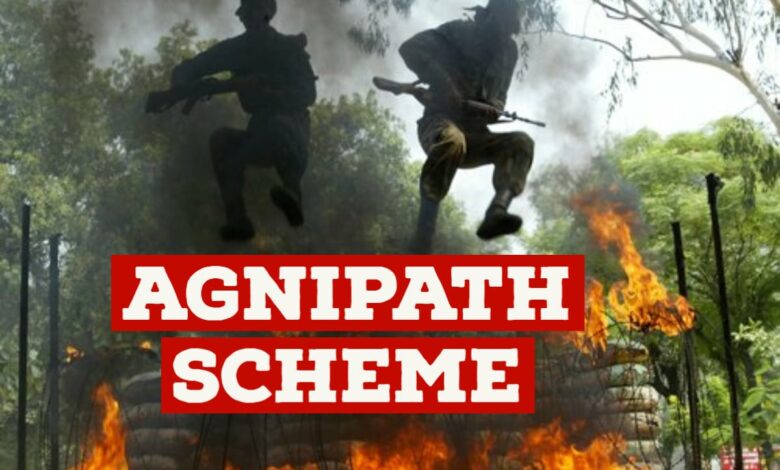
Is the Scheme of Agnipath Another Jhumla by Modi Trying to Build His Voters Before the 2024 Elections by Giving Small Time Useless Jobs? If Agnipath is so Progressive, Why Not Introduce it in all the Departments including Civil Services, Judiciary, Healthcare and Education?
The Indian government introduced the Agnipath Scheme on June 14, 2022, as a brand-new initiative to enlist soldiers into the Indian Army, Indian Navy, and Indian Air Force below the rank of commissioned officers. The Agnipath Scheme will be the exclusive route for joining the armed forces. Each candidate will be employed for only a total of four years. A maximum of 25 per cent of the retiring batch’s overall strength will be chosen for the permanent cadre. The remaining 75% of candidates who will not be eligible for pension benefits would receive a lump sum payout of around Rs. 11.71 lakh.

Agniveers, a new military rank, will be used to refer to individuals hired under this system. In September 2022, the program is expected to start. The initiative will disregard long tenures, pensions, and other benefits that were offered under the prior system. The Agnipath plan was approved by the Indian government in June 2022, and it will become operational in September 2022. The initiative is anticipated to employ 46,000 youth in September 2022.
The government claims that the country will greatly benefit from the injection of highly motivated youth who have a stronger grasp of self-discipline, diligence, and focus and who will be able to contribute in other fields. A brief military career has enormous benefits for the country, society, and the youth of the country.
However, by launching such schemes, the BJP is attempting to deceive the public ahead of the 2024 Lok Sabha elections. They promised a total of two crore jobs per year but failed to do so. Nevertheless, under the name of such schemes, they are merely deceiving the people of the country into thinking that the government has created some sort of employment for the unemployed youth.
Why should the government of India, which has come up with a ‘brilliant scheme’ to upgrade and monetize the military service, not extend the same benefits to all the other government departments? For example, all IAS and IPS officers should be recruited for a four-year tour of duty, with the best 25% getting permanent positions and the rest being let go with an 11 lakh lump sum severance package. After 4 years, only 25% of elected representatives will be eligible to run for re-election, while the remaining will get a severance compensation of 11 lakh with no pension.
Why should this ‘wonderful concept’ not be implemented throughout other government departments if it is so good and beneficial? The many representatives from the other government departments should not be prevented from having the same pleasure and progressing in their careers.
What is the Agnipath Scheme?
The Agnipath Scheme is a brand-new program that the Indian government unveiled on June 14, 2022, to recruit soldiers into the three armed services below the rank of commissioned officers. The only way to join the military will be through the Agnipath Scheme. All candidates will only be employed for a total of four years. Agniveers, a new military rank, will be used to refer to individuals hired under this system. The lack of public discussion and consultation during the inception of the plan has drawn widespread criticism including violent protests from the aspirants.

On June 16, 2022, tumultuous protests broke out throughout various Indian states as army aspirants demanded the repeal of the new program and vandalized government property. By June 17, 300 trains’ movements had been hampered and 12 trains were set on fire. There were 214 cancelled trains, 11 redirected trains, and 90 trains that were terminated before reaching their destination.
The program is slated to go into effect in September 2022. Long tenures, pensions, and other advantages that existed under the previous system will all be disregarded by this program. Indian opposition parties have criticized the new program and voiced their worries about its effects. They have requested that the plan be delayed and that a Parliamentary hearing be held on it.
Soldiers were enlisted into the armed forces on a 15+ year term with a lifetime pension before the implementation of the Agnipath scheme. For three years starting in 2019, there was no military recruitment. For this, the Indian government highlighted the COVID-19 outbreak as the reason. In the meantime, 50,000 to 60,000 soldiers continued to retire each year, creating a manpower crisis that started to limit the military’s ability to operate.
A ‘Tour of Duty’ program was suggested in 2020 to allow individuals to voluntarily join the armed forces for a three-year stint of short service. The proposed concept was intended to be tested first on a team of 100 officers and 1000 soldiers. However, the Indian government authorized the Agnipath initiative in June 2022, and it will go into effect in September 2022. On June 14, 2022, the announcement was made.

The program is open to both male and female candidates between the ages of 17.5 and 21. The Central Government increased the upper age limit from 21 to 23, but only for hiring in the year 2022, in the wake of strong demonstrations against the Agnipath scheme. For the Indian Army, Indian Navy, and Indian Air Force, recruiting through this program occurs twice a year. The vacant positions fall below the officer cadre. Agnipath is the only way to join the military.
The four-year contract for the recruits known as Agniveers involves six months of training and three and a half years of deployment. They will have the option to apply to stay in the military after they have retired from service. A maximum of 25% of the retiring batch’s overall strength will be chosen for the permanent cadre. A lump-sum payment of about Rs. 11.71 lakh would be given to employees who are terminated from their jobs after four years of service but are not eligible for pension benefits.
Long tenures, pensions, and other benefits that were part of the previous system will not be included in the new one. This came as a shock to many with the new scheme’s rules disappointing people who wanted to join the armed forces. The main issues were the short term of service, the lack of early release pension arrangements and the 17.5 to 21-year age restriction, which made many of the current aspirants ineligible to join the Indian armed services.
Through this program, the Indian government hopes to hire 45,000 to 50,000 new employees each year. 46,000 youngsters are expected to be hired through the program in September 2022. The Indian government did not create any white papers before the launch of the new recruiting program. Neither the Parliament nor the Parliamentary Standing Committee on Defense discussed the plan. Before its announcement, the public was not given any information about the project.
Who is an Agniveer?
The young people who enlist in the military through Agnipath will be referred to as Agniveers. According to the government, Agniveers will receive a ‘tempting monthly package’ that is specially tailored for them, as well as Risk and Hardship allowances as necessary for the three services. Agniveers will receive a one-time ‘Seva Nidhi’ package at the end of the four-year engagement term, which will include both their contribution and any accrued interest on it as well as a matching contribution from the government equal to the total amount of their contribution plus interest.
‘Seva Nidhi’ will not be subject to income tax. There will be no pensions or gratuities. For the term of their employment in the Indian Armed Forces, Agniveers would receive non-contributory life insurance coverage worth Rs 48 lakh. Additionally, the Agniveers will learn diverse military skills and experience, discipline, physical fitness, leadership traits, courage, and patriotism throughout this time of service to the country. Considering these ‘great benefits of the scheme, the government is unable to understand the reason for criticism and protests from the aspiring candidates who want job security.

After serving for four years, the Agniveers will be incorporated into a civil society where they can make significant contributions to the process of developing the country. Each Agniveer’s skills will be acknowledged in a certificate that will become a part of his resume. Not only this, the government argues that after Agniveer’s tenure, the doors and chances that will open up for their advancement in society will undoubtedly be a major asset for the development of the country.
The Agniveer would be able to pursue his or her future aspirations without being constrained by money, which is typically the case for young people from the economically disadvantaged strata of society. The ‘Seva Nidhi’ of roughly Rs 11.71 lakh would help. According to the government, this additional sum of money should be enough to help the candidates who are not selected since a sum of Rs 11 lakh is the only solution to this problem.
The people chosen for enlistment in the armed forces as regular cadre would be required to serve for an additional engagement period of at least 15 years and would be subject to the terms and conditions of service currently in effect for Junior Commissioned Officers/Other Ranks in the Indian Army, as well as their equivalents in the Indian Navy and Indian Air Force, as well as Non-Combatant enrolled in the Indian Air Force, as amended from time to time.
The Agniveers will be registered in the Forces under their separate Service Acts for a term of four years under the Agnipath system. They would create a unique rank in the Armed Forces that would be distinct from all other ranks. Agniveers will be given the chance to apply for permanent enrolment in the Armed Forces after completing four years of service, depending on organizational requirements and policies that are occasionally established by the Armed Forces.
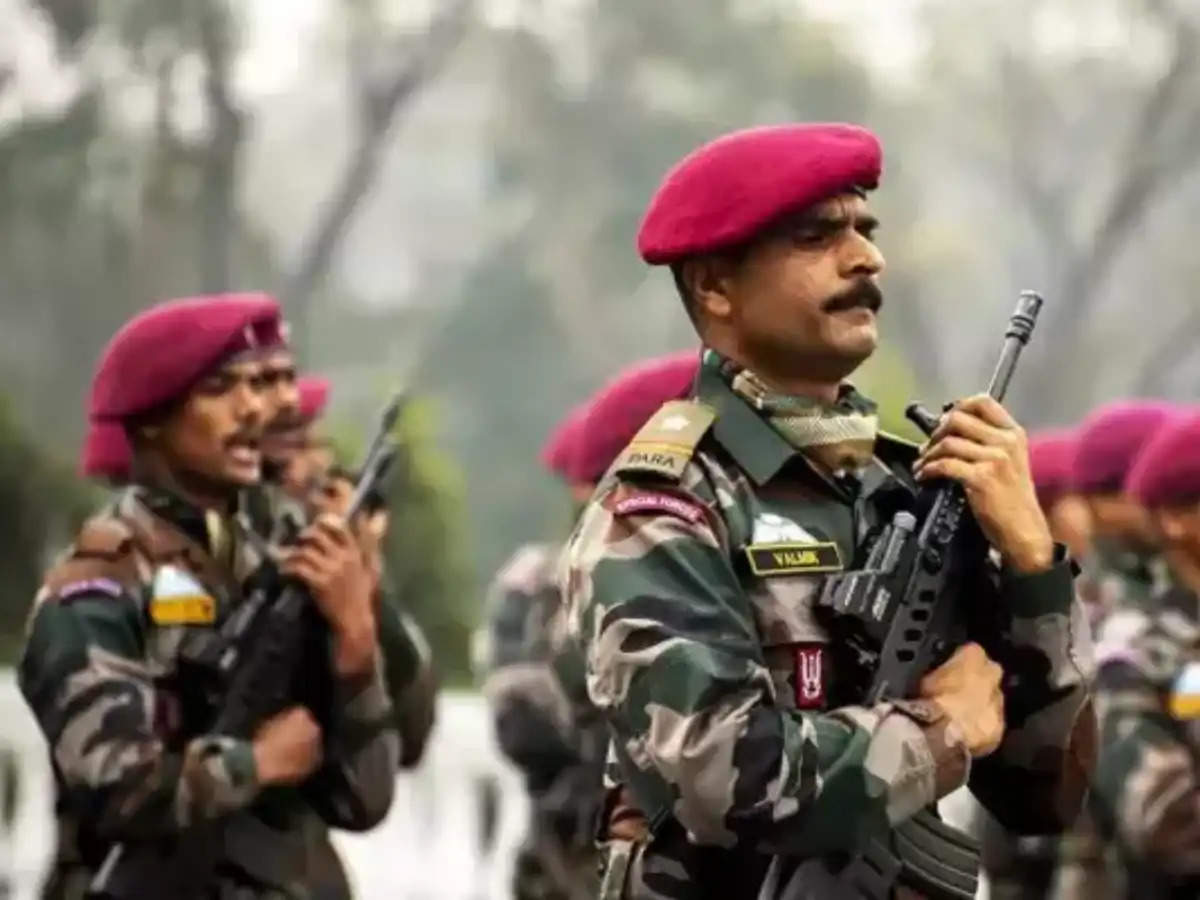
Up to 25% of any particular batch of Agniveers will be enlisted in the regular cadre of the Armed Forces once these applications have been evaluated centrally based on objective criteria, including performance during their four-year engagement period. Specific rules will be provided separately. For membership in different categories, Agniveers’ educational requirements will differ. The Armed Forces will have sole authority over the choice.
All three services’ enrollment will be handled through a single, centralized online application process, which will include campus interviews and special rallies from reputable technical institutions like Industrial Training Institutes and the National Skills Qualifications Framework, among others. The age range for eligibility will be between 17.5 and 21 years, and enrollment will be based on an “All India All Class” basis. Agniveers will satisfy the medical requirements for enlistment in the armed forces as they apply to the relevant categories/trades.
They would be eligible for honours and awards following the terms and conditions set forth by the Indian Army for Agniveers, as well as any current rules controlling the matter for the Indian Army. Agniveers may be assigned to any regiment or unit and may afterwards be moved to other regiments or units as determined by the organization’s needs. The performance so shown will be considered for ‘subsequent offer for enrolment in the Regular Cadre.’ Personnel enlisted through the Agniveer Scheme will be expected to complete routine medical examinations and physical, written, and field tests as specified by orders issued.
In the first year, the Agniveers will receive a wage package of 30,000. After that, they will receive an annual raise of 10%. Accordingly, their compensation for the second year would be $33,000, followed by $36,500 for the third year and $40,000 for the fourth. In the meantime, the Seva Nidhi corpus will receive about 30% of their monthly salary. Additionally, the Center will add an equal sum of 11.77 lakh after the conclusion of their service, or after 4 years, and each Agniveer will be paid the total amount.
This year, 46,000 Agniveers are expected to be recruited. Army has stated that it will hold 83 rallies across the nation, covering every state, from July to November. Induction into the training centres will be done in two batches, with the first batch of 25,000 Agnivesers entering by the first half of December and the second batch entering by the first half of February 2023.
Why the Scheme of Agnipath now when there is no Recruitment Anywhere?
Under the scheme of Agnipath, 46,000 Agniveers are anticipated to be hired this year. Together with Modi’s drive to fill 100,000 government positions, the 46,000 ToD (Tour of Duty) recruits per year are intended to sway the 2024 elections and conceal much higher rates of unemployment than the stated 4.2 per cent. According to a former IAS official, ToD is misleading the youth with no pension, medical, or canteen facilities after four years, an advertisement that suggests the person is being trained as a pilot.
Agnipath is a retrenchment plan that harms the unemployed in India and jeopardizes national security, despite being couched in the rhetoric of a patriotic employment scheme that offers the opportunity to the youth to serve Mother India. The Agnipath program will now be used for the customary annual open recruiting of about 40,000 soldiers. The main distinction is that, after four years, just 10,000 of the entrants will still be employed, while the remaining 30,000 would be mercilessly laid off. As a result, instead of the 40,000 jobs that were previously created, just 10,000 employment are offered annually.
Additionally, it jeopardizes national security because the Army will progressively rely on a large number of poorly trained, contractually hired soldiers. Nevertheless, this plan to reduce employment is being promoted as a fantastic employment strategy. It is said that the creation of new jobs includes even the partial fulfilment of eliminating the long-standing backlog of one million open positions in various government agencies. Additionally, both announcements were made at the same time, giving the impression that the prime minister had declared war on unemployment even if it is a war on the jobs.

The impact of the program, which excludes applicants older than 21 and leaves 75% of recruits jobless after four years without pension benefits, has stoked the ire of those who were anxiously awaiting the call for recruitment, even though the larger economic motivations and social imperatives behind the Agnipath project have not yet been fully understood by the general public. The government has lowered the age restriction to 23 for this year in response to the unrest on the streets, but this will not put out the fire that the scheme has started because it won’t address the crucial issue of what will happen to the recruits four years from now?
The military has been instructed to uphold ToD since the Army introduced it. Because Service Chiefs lack the guts to advise the government to first undertake a pilot project, it is irrelevant that the Army requested a test project but that the administration authorized a full-blown implementation. A few three-star service members are also cooing support to show that they are always ‘available’.
Although thousands of engineers, postgraduates, and MBAs are unemployed, regular army soldiers are seen as ‘unskilled,’ and the government refuses to incorporate the military in Group “A” Services, one Army Commander claims Agniveers will be skilled citizens. The myth that the Agnipath scheme will make the military more diverse, younger, and physically fit is untrue. According to the media, the admission age cap for ToD has already been increased by three years. Can any bootlicker demonstrate that the Army is unfit without ToD?
Is Agniveer a Jhumla (False Promise) to Impress the Indian Youth just before the Elections?
Because the elections in 2024 are drawing near, Modi has suddenly remembered his pledge to provide 10 lakh employment for the youth. With such hollow pledges, the party that made a two-crore job guarantee per year before the last elections is now attempting to deflect attention from its dreadful failure to do so. Given that the 18-month window the government specified for filling these vacancies falls shortly before the Lok Sabha elections, this is merely another electoral Jhumla.

Jobs being offered after four years under this scheme are simply an afterthought, just like election promises. Consider the 10% of CAPF (Central Armed Police Forces) jobs that are reserved. Their four years of seniority won’t be respected by CAPF. Why, therefore, instead of ‘touring’ the military, shouldn’t young people instead join the CAPF or police? Following the anti-ToD riots, Defence Minister Rajnath Singh also announced a 10% reservation in the MoD, DPSUs, etc.
Many young people’s goal of securing permanent and secure employment with the Indian Army would be crushed by the Tour of Duty (ToD) recruitment technique, which allows civilians to be recruited into the armed services for four years. Instead of announcing reservations and giving false hopes, can any minister assure the youth a definite figure that they will be receiving as their starting salary and that all 75% of the Agniveers discharged annually will find employment? The least that young people would desire is this, not political jhumlas.
According to the government, the country will tremendously benefit from the infusion of highly motivated youngsters who will be able to contribute in other areas and who have a deeper understanding of self-discipline, diligence, and focus. For the nation, society, and the country’s youth, a brief military career has great advantages. However, in reality, the administration has attempted to impose a corporate model of governance on the army by adopting the ToD plan and evading its legal obligations to provide soldiers with acceptable allowances and benefits.
In essence, the government will be allowed to forgo all of the military’s current financial and social security programs. Considering the government’s argument for diverse recruitment, the scheme will undoubtedly make the military diverse. In the same unit, there will be a split system with one soldier on regular pay entitled to take full yearly leave and the ToD inductee on less pay and 30 days of annual leave. What will the Agniveer’s psychological state be if there is no employment guarantee after four years?
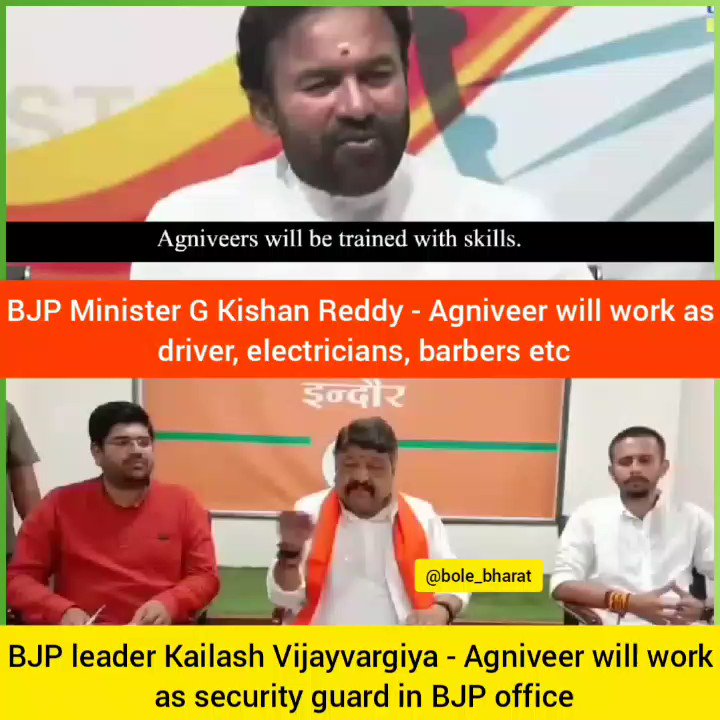
When the unit or sub-unit is attacking a heavily guarded enemy or terrorist position, what will he be thinking about as a permanent soldier? Will he take advantage of every chance to “earn money” covertly, causing corruption in the military? When compared to the Rs 50,000 an MCD safaiwala makes in a year, the so-called attractive deal for Agniveer with first-year cash payments of Rs 21,000 and fourth-year cash payments of Rs 28,000 is a joke. After four years, the Seva Nidhi of Rs. 11.71 might have to be utilized as a bribe to land a second job?
There is zero likelihood that 75% of the terminated recruits annually will find employment with the government or elsewhere. The result will be a heavily militarized society that terrorist insurgents, the ISI, and Chinese intelligence will profit from. In India, there is no shortage of illegal weaponry. But the government seems determined to use this self-inflicted wound and purposeful divisiveness to gain support.

In addition to migrating to work in the informal sectors of western and southern states, the Indian Army and Railways are a significant source of employment in regions like Bihar, UP, and Haryana, where riots have broken out over unemployment. In contrast to the idealized notion of serving one’s country held by the middle class, being a soldier is therefore basically a real and naked question of daily food for the poor.
People have linked anti-Agnipath demonstrations to CAA and Farmers’ protests. The government refuses to recognise that thousands of people queue up at recruitment rallies despite the Army’s systemic degradation, which cannot be made up for by erecting memorials. Some of them support their parents and other family members as the only earners in the household. Instead of four-year tourism, they want job security.
Not only the Agniveers will not be provided with a pension, canteen, or other perks that are given to Army recruits, the Agniveers won’t even receive the honour of martyrdom if he passes away during their four-year duty. Even the so-called exit package of Rs. 11 lakh will be partially paid by a monthly deduction of 30% of his pay. This is nothing more than a scam that makes fun of our warriors’ patriotism and commitment.
Why the Government is not following the Standard Recruitment Procedure of the Indian Army, is it due to a Lack of Funds?
Defence budgets have been negative in real terms despite periodic government assertions that there is no shortage of funding for the military. Reduced defence spending allowed the opposition to scream more about defence pensions hiding the cost of hiring civilian defence workers, as previously indicated. The Group “A” services, civilian defence personnel, and members of the CAPF earn significantly more money working longer hours. It is the government’s pleasure, however, to watch soldiers fight in hostile environments, support their families, educate their children, and survive on their own when they grow old?

We must be prudent and refrain from changing military recruitment practices or growing the Territorial Army. However, the Finance Minister is adamant about extracting as much money as possible from the military while sparing no expense for other services or industries. The Modi government has written off bank loans worth thousands of crores since 2014 and granted the business sector a tax exemption of Rs. 1,45,000 crore a few years ago, which would have grown 4-5 times, so the military is not the only group being attacked over the pension payment.
The government is desperately trying to cut spending on salaries and pensions as a result of the neo-liberal fiscal conservatism guiding official policy. More than 2.6 lakh crore of the almost Rs 5 lakh crore defence budget is spent on salaries and pensions. The Fiscal Responsibility and Budget Management Act (FRBM), passed in 2003 to demonstrate to foreign investors India’s credibility, requires the Union and state governments to practice fiscal restraint by reducing the revenue deficit to zero and maintaining the fiscal deficit at 3% of GDP.
In real words, this means that to finance pro-capital reforms and spend on the infrastructure that the global capital market demands, the government must reduce revenue expenditure and boost revenues. According to one media article, which estimated the cost of each soldier at Rs. 11.5 crore, the government is promoting Agnipath primarily to save money. Why isn’t ToD the only recruitment method for the police, CAPF, and Group ‘A’ services if it is such a fantastic idea? Wouldn’t that be 50 times more cost-effective than focusing only on the military? In addition, one estimate states that each soldier on a 4-year ToD will cost the relevant Service about Rs 40 lakhs.

Although government spending is a significant source of growth, progress, and survival in developing nations, the state’s role has been reshaped as a facilitator, and the task of unleashing growth and creating jobs has been given to private capital. Neoliberal employment practices, such as contractualization, fixed-term employment, and the removal of social benefits, are being applied across all industries, despite their failure in this regard. Contractual, unsure, and without pension benefits are becoming more common in government hiring as well.
However, on the other hand, the freebies given out by all political parties, the cash spent to purchase votes and politicians, and the huge amount spent on daily propaganda that may surpass the Joe Biden administration’s propaganda apparatus in America, doesn’t India appear to be an extremely wealthy nation?
Has anyone looked into the costs associated with the salaries, pensions, and benefits of government agencies with civilian staff, particularly those connected to the military, such as DRDOs (Defence Research and Development Organisation) and DPSUs (Defence Public Sector Undertaking)? How large is CAPF, and what are its salaries, benefits, and pensions? How come only the military is under attack, and the Army specifically?
When we are engaged in a standoff with China, the military needs reorganization similar to what China did, not a TOD wave. Rajnath Singh stated that India has to be ready for an all-out war on July 13 in Mussoorie. Our policy toward China is ‘Hum Dekh Rahe Hain,’ regardless of enemy intrusions in Ladakh, PLA consolidation in intrusion areas, twin PLA bridges over Pangong Tso, Chinese village in Arunachal, or our lack of knowledge of China’s intentions. However, we don’t even respond to Pakistan’s proxy war in the same way. Is now the right moment to use the Agnipath scheme to save money while bragging about achieving a $5–$10 trillion economy?
Is Agniveer a Scheme just like Demonetization and 15 lakhs to fool the Indians?
For all the Indian citizens, especially small enterprises and informal labourers, the previous five years have felt like a succession of 100-meter races, one at a time. The Modi administration has ruined India’s small enterprises. Every time there is a ‘great purpose,’ whether it is the Goods and Services Tax, the lockdown, or demonetisation, the populace is expected to put up with so-called temporary inconveniences. A list of changing phrases that occasionally varies is “ache din,” “Digital India,” “surgical strike on black money,” “Rs 15 lakhs to every citizen,” “Make in India,” “Aatma Nirbhar Bharat,” and “five trillion economy.”
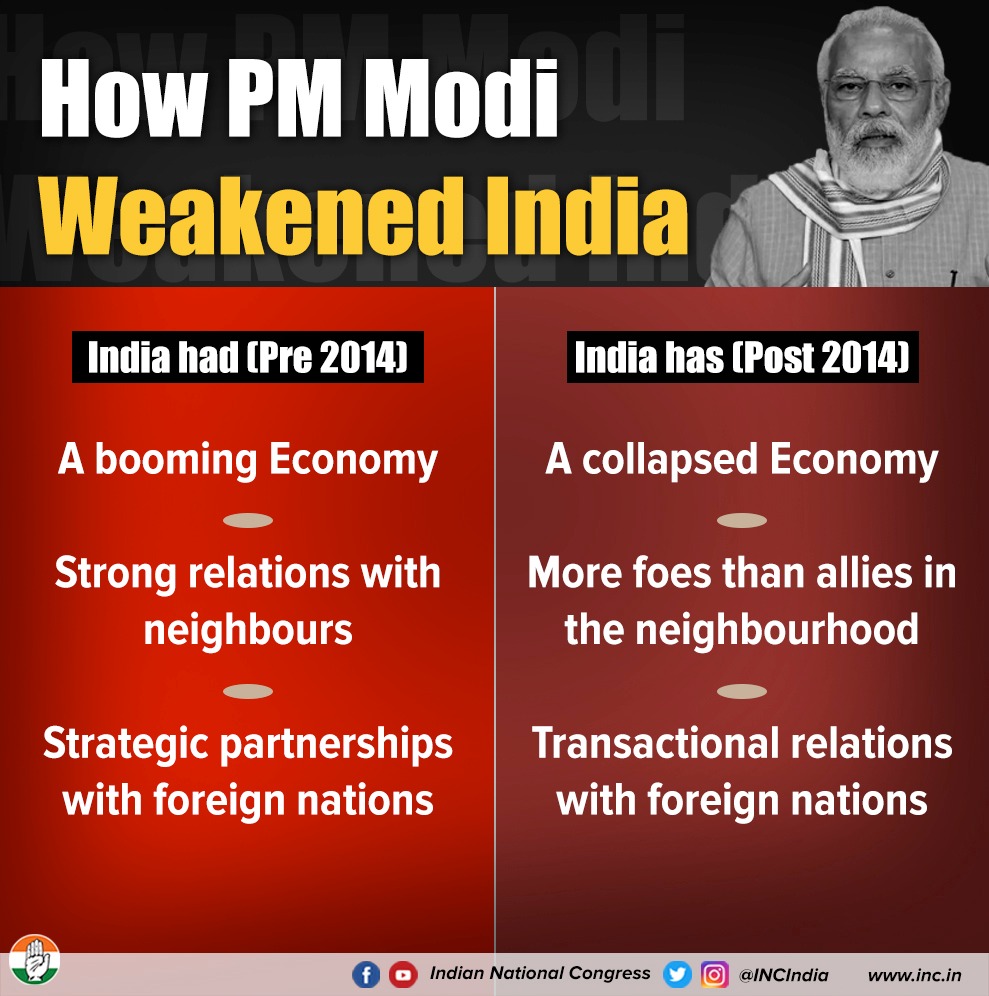
Each one is packaged with the ideal ratio of branding and loud media newsrooms, which has turned us into a nation where people have short attention spans and even shorter memories. Every time the BJP government comes up with a new policy, the residents are supposedly expected to bear ‘momentary afflictions’ to accomplish a ‘noble purpose.’ When taken as a whole, the lockdown, GST, and demonetisation are not quick sprints but rather a five-year marathon that has become a death trap for small enterprises that employ the majority of the informal sector. Hatred, bigotry, and deceptively worded promises have hindered us from recognizing these stark facts and instead gave us an exaggerated feeling of self-worth.
Another one from the long list of false promises made by Narendra Modi to Indian residents includes the ‘promise’ he made as the party’s candidate for prime minister that each Indian would receive Rs. 15 lakh when black money was repatriated from overseas. Modi has frequently stated that if the NDA (National Democratic Alliance) is elected, it will make sure that Indian black money that has been hidden overseas in tax havens is brought back to India and distributed to the needy, with each recipient receiving Rs 15 lakh in their accounts.
The scheme of Agnipath is yet another one of Modi’s ‘noble purposes’. By proposing such initiatives, the BJP is seeking to fool the public ahead of the 2024 Lok Sabha elections. They promised a total of two crore jobs every year but failed to accomplish so. Under the guise of such plans, however, they are only misleading the populace into believing that the government has found some form of a job for the youth who are unemployed.
Because of this, job seekers have not been persuaded by the promises made by BJP state governments in response to the simmering resentment regarding the reservation of and giving priority to retired ‘agniveers’ in police recruitment as well the assurance of skill certificates and even degrees after commission.
The Railway Recruitment Board modified its eligibility requirements months before the Agnipath shock, leaving thousands of applicants high and dry. North Indian youth placed all of their hopes in military enlistment as the agricultural and unorganized sectors, which offer employment to the left behind, were severely impacted by demonetisation, goods and services tax, later COVID-19, and Modi’s lockdowns. However, Agnipath arrived as a shock to many.
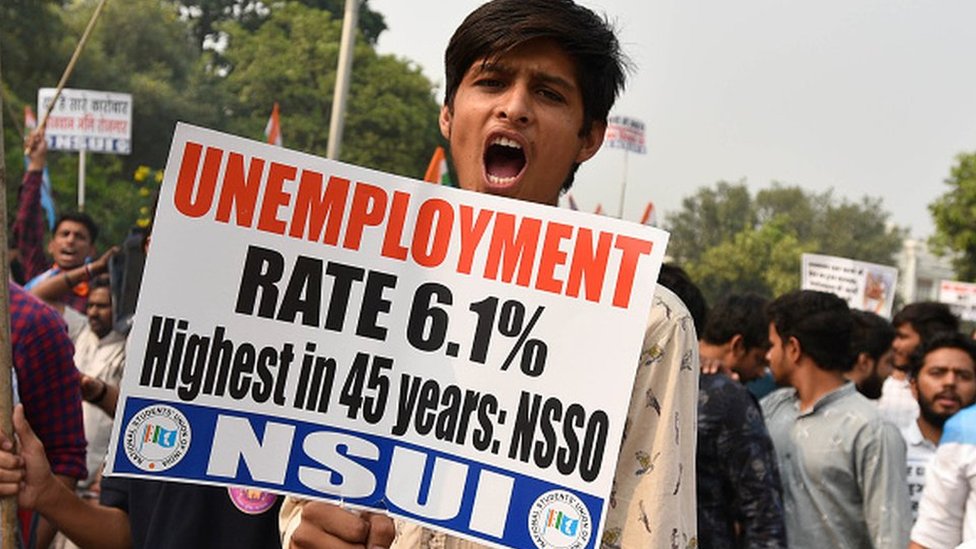
India is already experiencing a severe unemployment crisis, which Modi has made worse with his poor economic policies and, more recently, his neoliberal hiring practices. The BJP government has failed to solve the underlying economic issues, even though this resentment is exploited during election time by communal polarization and last-minute beneficiary giveaways.
Why shouldn’t the Indian government, which has developed a “great strategy” to improve and profit from the military service, also offer the same advantages to all other government agencies? For example, all IAS and IPS officers should be hired for a four-year tour of duty, with the best 25 per cent gaining permanent employment and the remainder being let go with an 11 lakh lump sum severance package. Only 25% of selected candidates will be entitled to re-election after five years, while the remaining would receive an 11 lakh severance payment instead of a pension.
Why should this ‘wonderful concept’ not be spread throughout other government agencies if it is so nice and beneficial? Why not introduce the same concept to all the other departments like civil services, judiciary, healthcare, and education if the Agnipath scheme is so forward-thinking and progressive for our nation?
This neoliberal policy is introduced to the army through the Agnipath initiative, but the government neglected to factor in the associated social and political implications. Like GST, the zero-notice lockdown of 2020, and demonetisation, India is almost certainly in for another Modi-made disaster.
Why is the Government not Concerned about Compromising the Security of India?
From any perspective, least of all national security, the entire plan cannot withstand even the most basic inspection. If the goal is to keep the army young, Agnipath does not address how an army can be healthy and professional if half of its soldiers would be on brief ‘tours of duty’ by 2032, according to Lieutenant General B.S. Raju. According to another army veteran, the Indian Army will resemble a ‘kindergarten’ force with few soldiers motivated to take chances or invest in their education.
Modern technology and complex weapons require extensive knowledge and training to operate. Because the Agniveer will have to start at the bottom of the ladder at the end of his 4-year stint, six months will be woefully insufficient for him to develop the same qualities and camaraderie. Are we misleading the youngsters and endangering the combat arms and units? Is the Army preparing for “on-the-job training” for a year or longer but remaining silent? How will this be handled by fighting forces that are widely dispersed in operational areas?
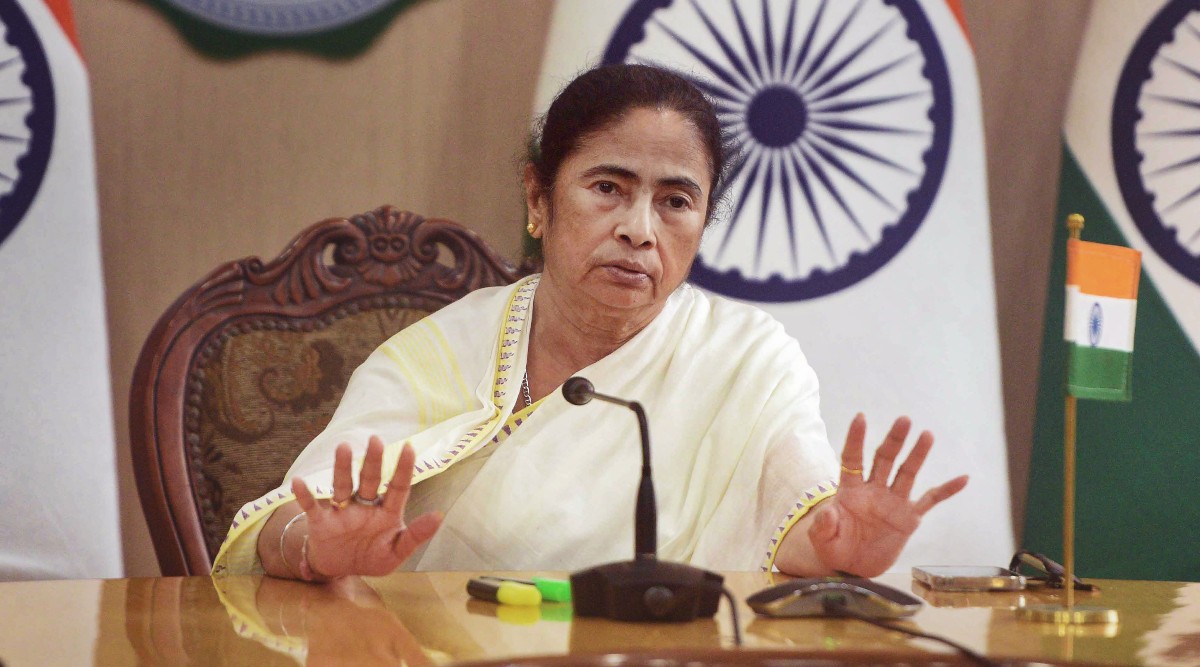
Mamata Banerjee, the chief minister of West Bengal, attacked the BJP-led federal government over the ‘Agnipath’ program, claiming that the BJP was attempting to build its own ‘armed’ cadre base through the brand-new defence recruitment program. She added that the plan was a ‘lollipop’ designed to produce criminals who would steal votes for the BJP. The BJP is attempting to develop its armed cadre base through this program. After four years, what will they do? This is firearms training, not instruction provided by the army. They will be granted a license to own weapons. In the Assembly, Mamata Banerjee stated that the party wanted to provide youth with weapons.
If our military is transformed through ToD into a semi-conscript force, its fighting potential in an inevitable future battle with China will be greatly diminished. Despite the bravado, we lag well behind the PLA in terms of technological sophistication. The country will suffer a great deal from this “demonetization of the military.” Many people believe that the military produces disciplined citizens through ToD, but is it the military’s responsibility to defend the country or to discipline the people?
On the other hand, how are these agniveers expected to exist after the retrenchment with only a talent certificate that would be useless in civilian life? What would the risk and expense to society be if it had to deal with a military-trained, frantic army of unemployed young men? What kind of social chaos is Modi bringing about in India? Even military veterans who support the current leadership have brought up these issues.
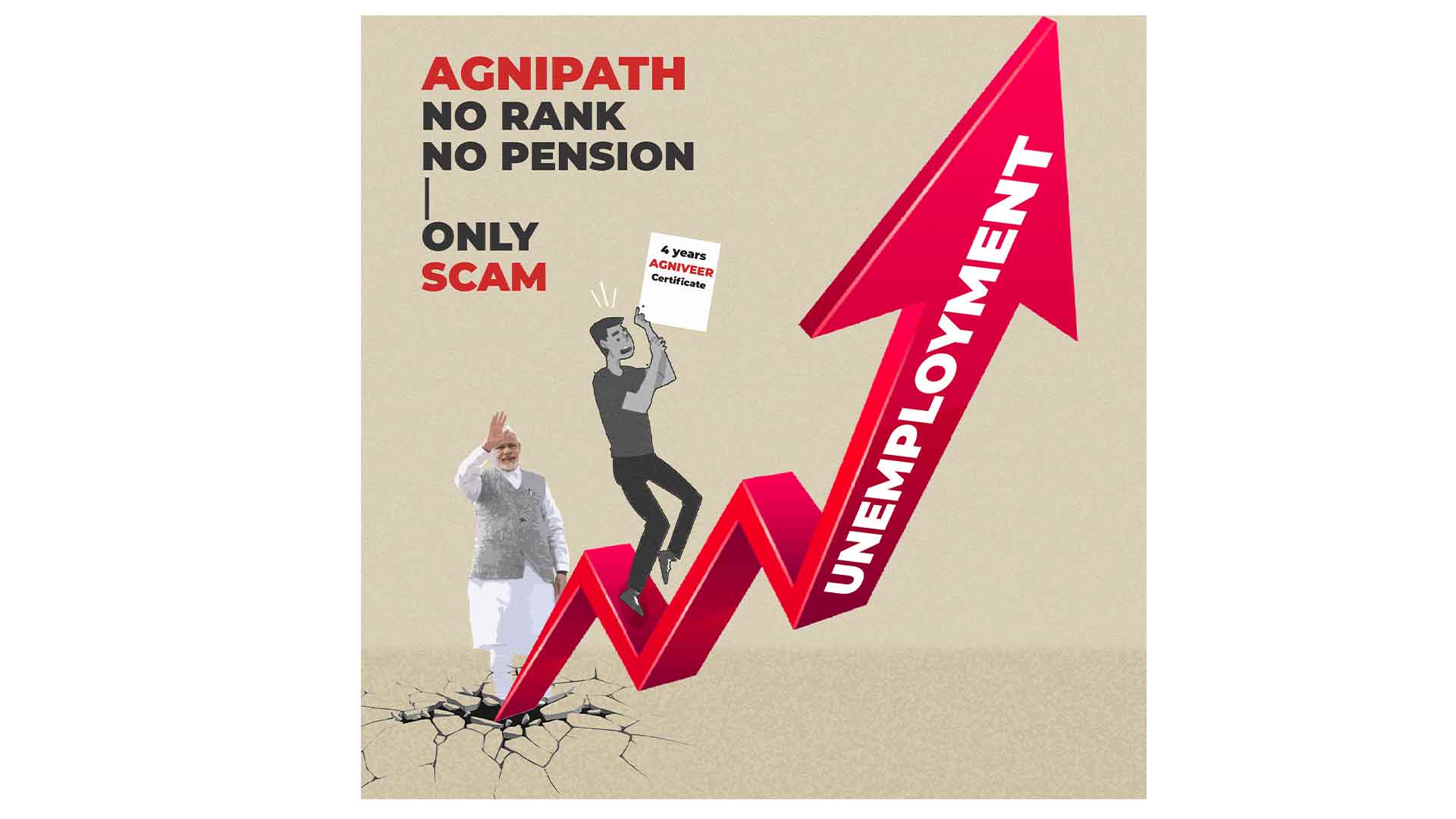
The Bharatiya Janata Party (BJP), according to the Aam Aadmi Party (AAP), has misled the country’s youth with false promises since it has failed to address their number-one concern: unemployment. Siddhesh Bhagat, national vice-president of the party’s youth wing, described the two recent announcements by the Modi Government, the Agnipath scheme for short-term recruitment in the defence forces and the 10 lakh Central government vacancies to be filled in 18 months as a massive fraud and a betrayal of the nation’s youth.
Even though there is no significant opposition and it is not cohesive, PM Modi continues to be primarily focused on the elections. He must decide seriously whether to impose ToD broadly. All of this leads one to believe that the government just cares about finding a faster way to move up the ladder. Will PM Modi evaluate the Agnipath scheme in the national interest or will he continue to support it?




